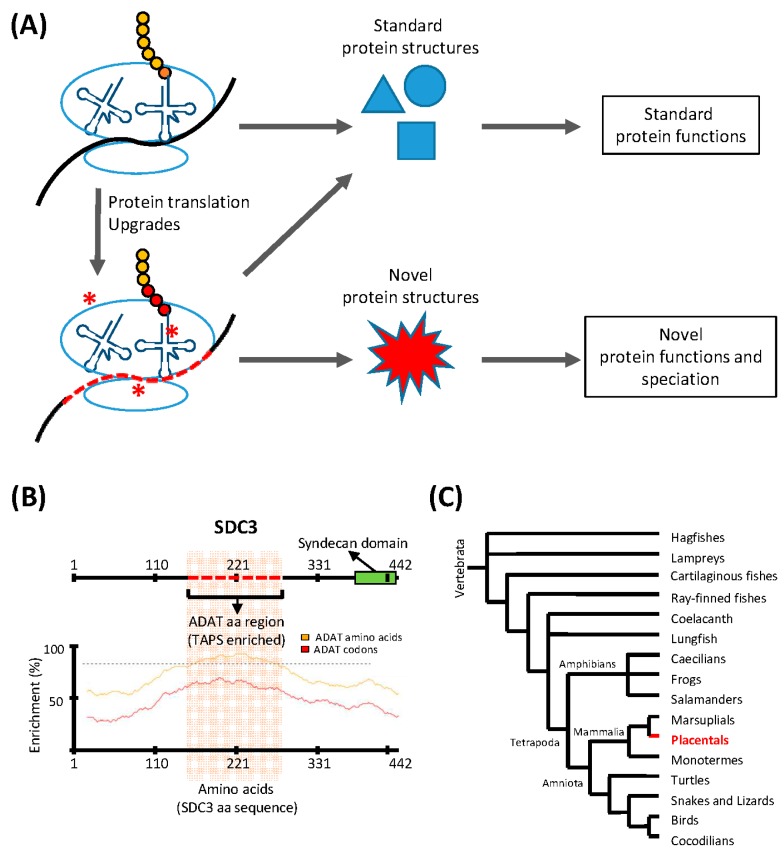Figure 1.
Translation upgrades may lead to novel protein structures and drive speciation. (A) The translation machinery is capable of synthesizing a finite number of standard protein structures, and translation ‘upgrades’ (red asterisks) such as codon usage adaptations, or modulation of the tRNA pool, allow the translation machinery to synthesize proteins with novel structures and functions. This process may drive speciation; (B) An example of a gene (SDC3) containing a region with a sequence highly enriched in ADAT-related amino acids (red dashed line; upper panel). The codon composition of the DNA coding for this domain is highly biased towards triplets recognized by tRNAs modified by ADAT. The lower panel shows the enrichment in ADAT-related amino acids (yellow line) and ADAT-dependent codons (red line) across the whole sequence of SDC3. The dashed line marks an enrichment level of ADAT-dependent codons of 80%; (C) Consensus phylogeny for Vertebrata. SDC3 belongs to the syndecan proteoglycan family found solely in placentals (highlighted region). The activity of ADAT may have contributed to the emergence of SDC3-type domains in placentals.

